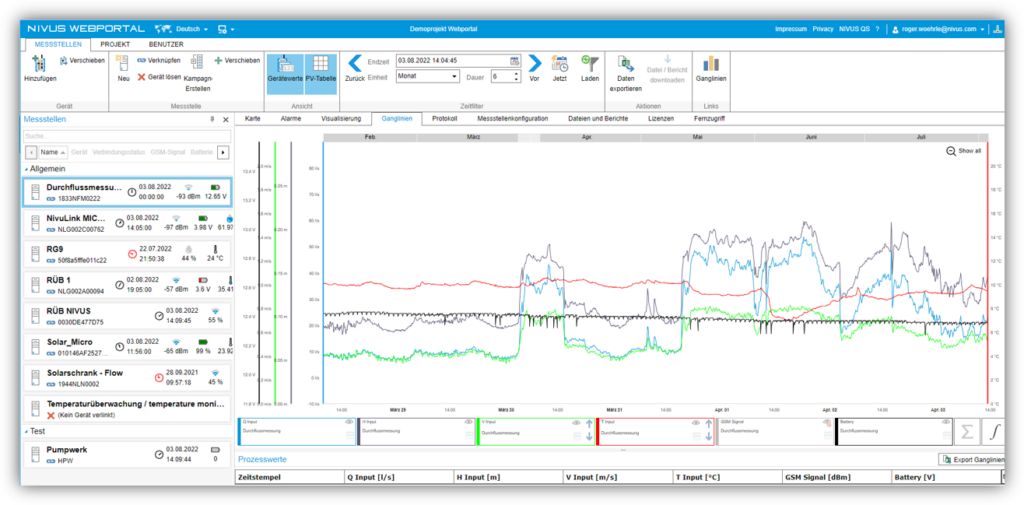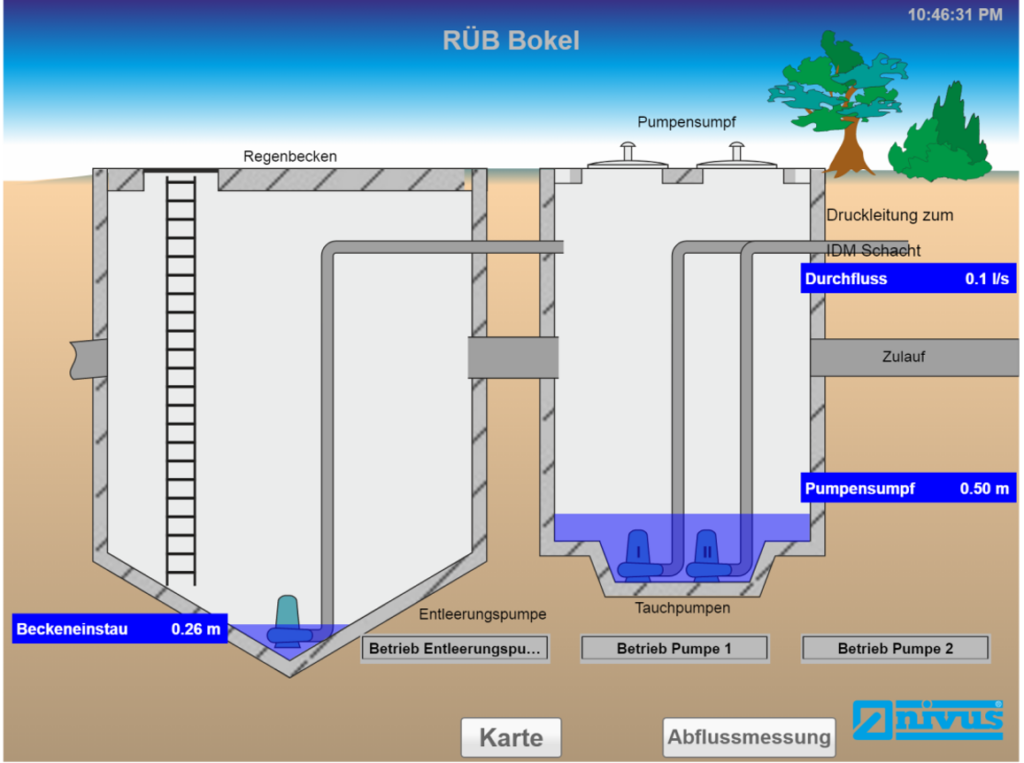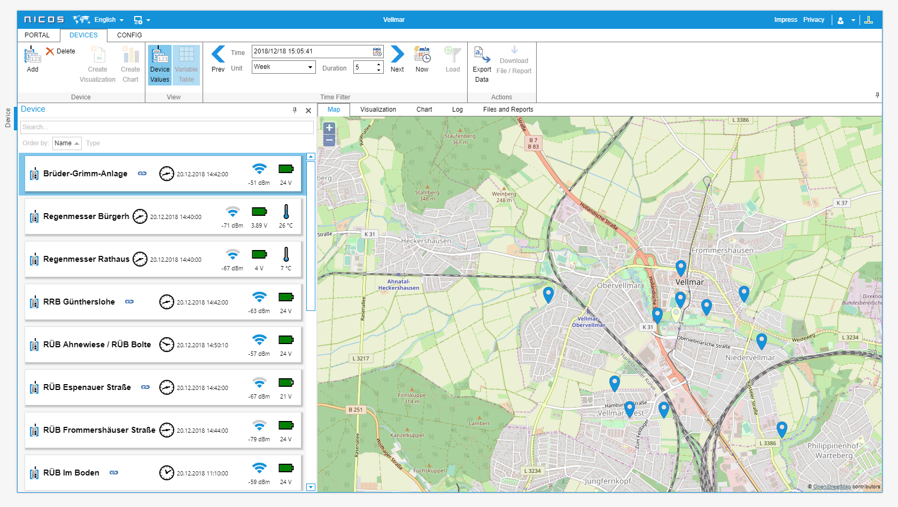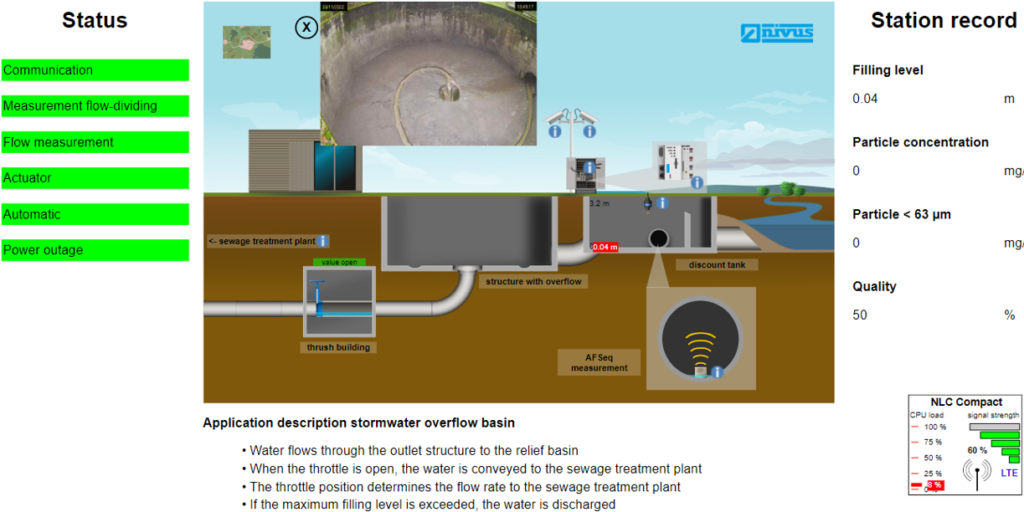Here are four of these providers that offer direct data logger integration.
FlowChief
The integration of Microtronics data loggers into the FlowChief platform is effortless via a REST API call. This integration allows the data of all visible devices to be seamlessly synchronised with FlowChief. This synchronised data is available across the platform for comprehensive use, including visualisation, monitoring, surveillance, logging and simple analysis.
Version Information: Available from FlowChief version 8.0 SP4 for all control systems, SCADA and portal applications.
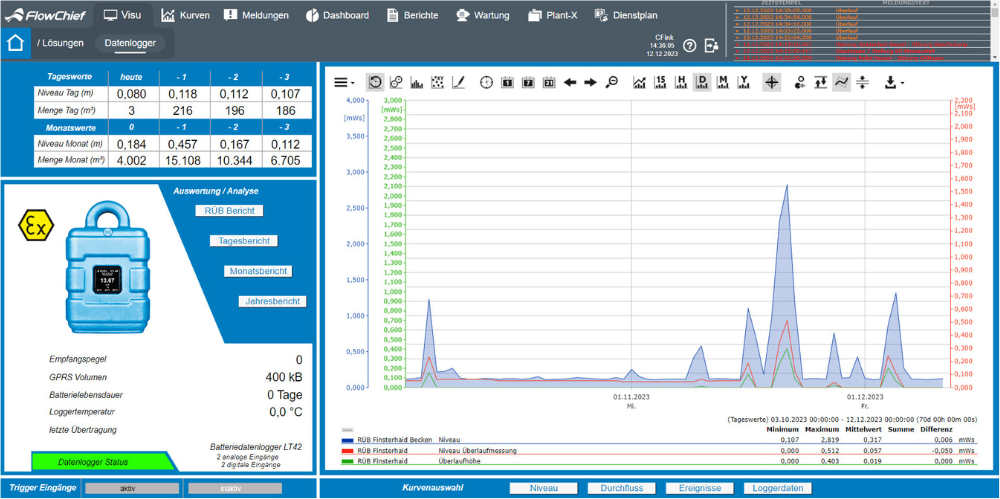
AQASYS from SCHRAML
The AQASYS process control and telecontrol system from Schraml is the flexible and innovative solution for all monitoring and management tasks for operators of water supply, sewage treatment plants, sewer networks and infrastructure, flood protection and energy systems.
As a complete solution, AQASYS covers all process monitoring and control tasks in one system: visualisation, alarming, reporting, trend lines, maintenance, telecontrol and many other function and industry modules such as energy management and optimisation, RÜB monitoring and logging, sewer network management, pipe burst/leakage detection and much more. AQASYS can be used
AQASYS can be used on a desktop PC, in a web browser, as an app (iOS, Android) and on HMI touch panels.
Translated with DeepL.com (free version)
The high connectivity of AOASYS enables connection and data exchange with virtually all modern devices, systems, portals and web services. With AQASYS you can manage all your data and processes in one digital tool – with one login. This means that data from Microtronics’ myDatalog data loggers can be easily transferred to AQASYS via REST API or OPC UA. AQASYS is used in more than 3,000 systems of all sizes, from small metering stations to large wastewater treatment plants, water utilities and telecontrol networks.

mSyS. from MSS Elektronik
mSyS. process control system from MSS Elektronik V 4.x has supported direct coupling to the Microtronics IoT platform since the beginning of 2023. With the mSyS. process control system from version 4.x and the Microtronics IoT process variable API, a powerful coupling is available for the Microtronics “myDatalog” series. Log, document and analyse your data collected in the field in your familiar, powerful mSyS. process control system. As the Microtronics devices in their various forms use corresponding IoT process variables, the mSyS. IoT API is also available in various gradations of 256 IoT process variables.
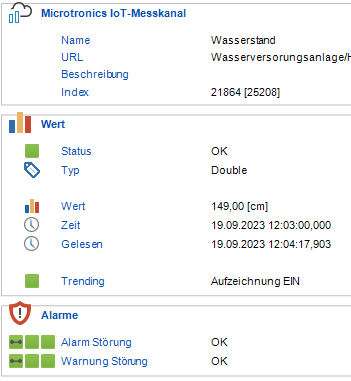
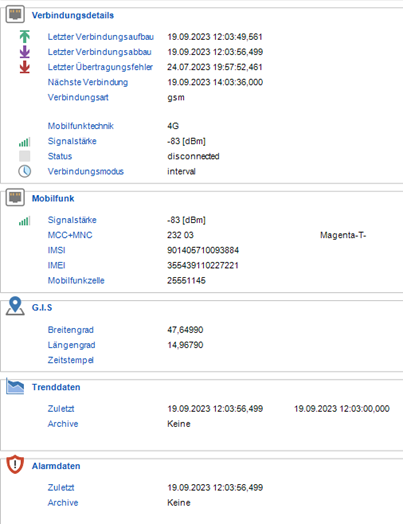

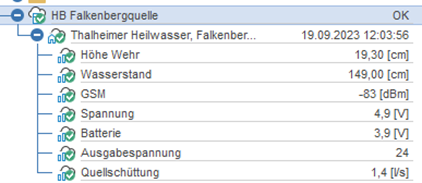
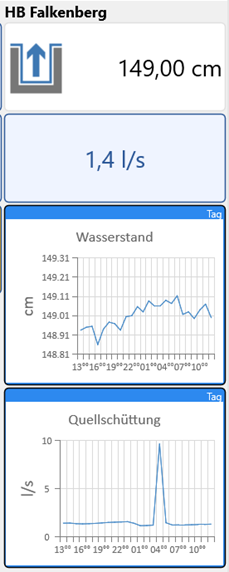
NIVUS
The D2W middleware is a software component that consumes data from the Microtronics platform via a provided HTTP REST API. Once the data has been consumed, the middleware converts the data and makes it available via the MQTT protocol. The middleware is configured via the device platform, allowing administrators or users to make settings. The key functions include:
- Data consumption via HTTP REST API: The middleware retrieves data from the Microtronics platform.
- Data conversion: Once the data has been retrieved, it is converted according to the NIVUS standard.
- MQTT provisioning: The middleware provides data via MQTT, enabling efficient and reliable communication with other systems.
- Configuration from the device platform: Administrators can configure the middleware via the device platform, enabling centralised control and management.
Overall, the D2W middleware enables seamless integration between the Microtronics platform and the NIVUS WebPortal, with flexible and user-friendly configuration via the device platform.
